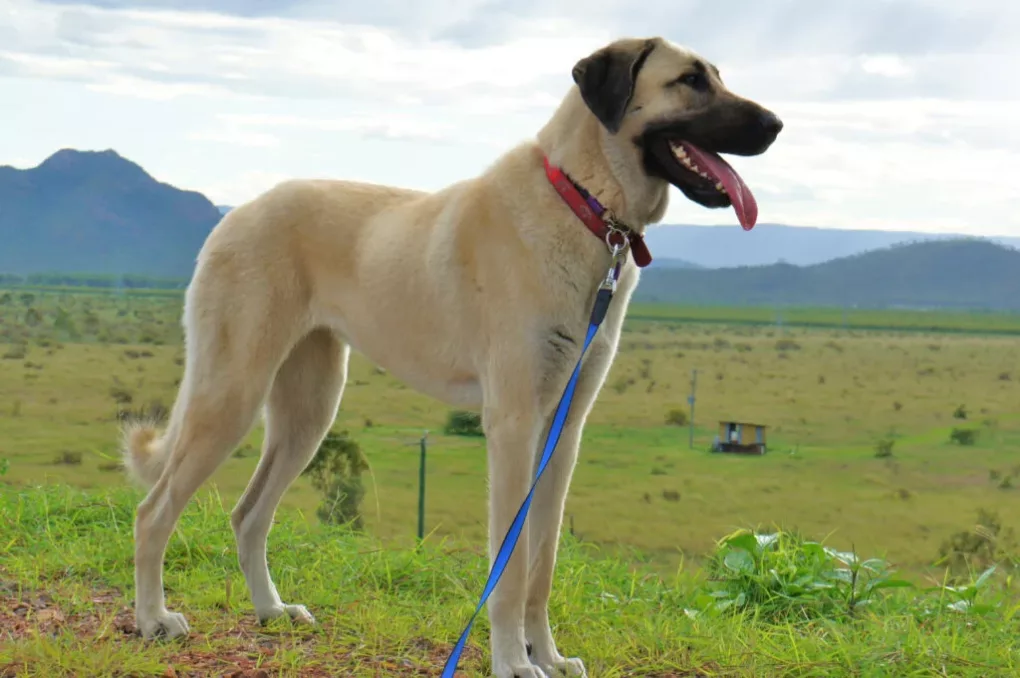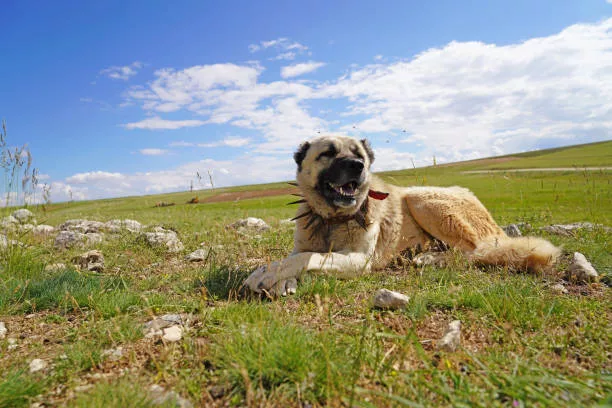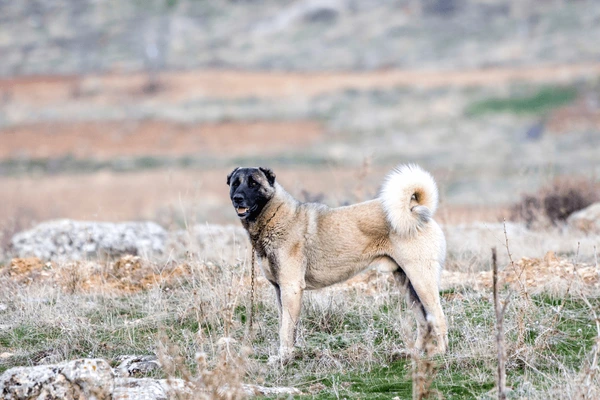The Anatolian Shepherd Dog is a remarkable breed with a rich history and a unique set of abilities. These dogs have been used for centuries to protect livestock in Turkey, and they are known for their intelligence, courage, and independence. Anatolian Shepherds are also very loyal and affectionate companions, and they can make excellent family pets.
History of the Anatolian Shepherd Dog
The Anatolian Shepherd Dog is an ancient breed that is believed to have originated in the Anatolia region of Turkey. These dogs were first used by nomadic shepherds to protect their flocks from wolves, bears, and other predators. Anatolian Shepherds are well-adapted to the harsh conditions of Anatolia, and they are known for their ability to survive in cold weather and with limited food and water.

Origins of the Breed
The exact origins of the Anatolian Shepherd Dog are unknown, but it is believed that they descended from ancient mastiff-type dogs brought to Anatolia by nomadic tribes thousands of years ago. These dogs were bred with local breeds, resulting in the development of the Anatolian Shepherd Dog we know today.
Use as Livestock Guardians
Anatolian Shepherds have been used as livestock guardians for centuries in Turkey. They were highly valued by nomadic shepherds for their ability to protect their flocks from predators such as wolves, bears, and even jackals. These dogs were left alone with the flock and were expected to use their instincts and courage to keep them safe.
Exportation and Popularity
In the early 20th century, Anatolian Shepherds began to be exported to other parts of the world, including Europe and the United States. These dogs quickly gained popularity for their working abilities, and they are now used as livestock guardians in many countries around the world. In 1970, the Anatolian Shepherd Dog Club of America was formed, and the breed was officially recognized by the American Kennel Club in 1996.
Appearance of the Anatolian Shepherd Dog
Anatolian Shepherd Dogs are large, powerful dogs with a muscular build. They have a thick coat of fur that is typically white, but can also be brindle, black, or sable. Anatolian Shepherds have a long, narrow head and a strong muzzle. Let’s take a closer look at the physical characteristics of this remarkable breed.
Size and Weight
Anatolian Shepherds are considered to be a large breed, with males standing at 29-32 inches tall and weighing between 110-150 pounds. Females are slightly smaller, standing at 27-30 inches tall and weighing between 80-120 pounds. These dogs have a strong, athletic build and are capable of great endurance.
Coat and Colors
The Anatolian Shepherd Dog has a double coat, with a short, dense undercoat and a longer, coarser outer coat. This coat provides protection from the elements and helps them stay warm in cold weather. The most common color for Anatolian Shepherds is white, but they can also come in brindle, black, or sable. Some may also have a black mask on their face.
Head and Facial Features
One of the most distinctive features of the Anatolian Shepherd Dog is its long, narrow head. They have a strong, broad skull and a well-defined stop. Their ears are set high and can be either dropped or semi-pricked. Anatolian Shepherds have a strong, square muzzle with a black nose and powerful jaws.

Temperament and Behavior
Anatolian Shepherds are known for their intelligence, courage, and independence. They were bred to work independently and make decisions on their own, which can make them challenging to train. However, with proper socialization and training, they can make excellent family pets.
Loyal and Protective
Anatolian Shepherds are fiercely loyal to their families and will do anything to protect them. They have a strong instinct to guard and protect, which makes them excellent watchdogs. However, this also means that they may be wary of strangers and need early socialization to prevent aggression towards unfamiliar people.
Independent Thinkers
As mentioned earlier, Anatolian Shepherds were bred to work independently and make decisions on their own. This trait can make them stubborn and difficult to train, as they may not always listen to commands. It’s important for owners to establish themselves as the leader and use positive reinforcement techniques to train these dogs effectively.
Exercise Needs
Due to their large size and high energy levels, Anatolian Shepherds require plenty of exercise to stay healthy and happy. They enjoy long walks, hikes, and playing in a fenced yard. These dogs also have a strong prey drive, so it’s important to keep them on a leash when out in public to prevent them from chasing after small animals.
Health Concerns
Like all breeds, Anatolian Shepherd Dogs are prone to certain health issues. It’s essential for potential owners to be aware of these conditions and take necessary precautions to ensure their dog’s well-being.

Hip Dysplasia
Hip dysplasia is a common condition in large breeds, including Anatolian Shepherds. It is a hereditary condition where the hip joint does not form correctly, leading to pain and discomfort. Responsible breeders will screen their dogs for hip dysplasia before breeding to reduce the risk of passing it on to offspring.
Bloat
Bloat, also known as gastric dilatation-volvulus (GDV), is a life-threatening condition that can occur in large, deep-chested breeds like Anatolian Shepherds. It happens when the stomach fills with gas and twists, cutting off blood supply to the vital organs. Immediate veterinary care is necessary to save a dog’s life if they develop bloat.
Eye Issues
Anatolian Shepherds can be prone to several eye issues, including entropion (eyelids that roll inward), ectropion (eyelids that roll outward), and cataracts. Regular eye exams by a veterinarian can help detect and treat these conditions early on.
Grooming Needs
Despite their thick coat, Anatolian Shepherds are relatively low maintenance when it comes to grooming. They only require brushing once or twice a week to remove loose fur and prevent matting. These dogs shed heavily twice a year, so more frequent brushing may be necessary during those times.
Bathing and Nail Trimming
Anatolian Shepherds do not need frequent baths unless they get particularly dirty or smelly. However, regular nail trimming is essential, as their large size and active lifestyle can wear down their nails quickly. It’s also important to check and clean their ears regularly to prevent ear infections.
Seasonal Coat Changes
As mentioned earlier, Anatolian Shepherds have a double coat that helps them adapt to different weather conditions. In the winter, their coat will become thicker and longer to provide insulation and protection from the cold. In the summer, they will shed this extra fur to stay cool. Owners should be prepared for increased shedding during these seasonal coat changes.
Training and Socialization
Anatolian Shepherds are intelligent dogs, but they can be challenging to train due to their independent nature. Early socialization is crucial to prevent aggression towards strangers and other animals. Positive reinforcement techniques, such as treats and praise, work best with this breed.
Obedience Training
Obedience training is essential for Anatolian Shepherds, as it helps establish boundaries and teaches them to listen to commands. However, owners should be patient and consistent with training, as these dogs may not always respond immediately. It’s also important to use positive reinforcement techniques and avoid harsh punishment, as it can lead to fear and aggression.

Socialization with People and Other Animals
As mentioned earlier, Anatolian Shepherds have a strong instinct to protect their families and may be wary of strangers. Early socialization is crucial to prevent aggression towards unfamiliar people. These dogs also have a high prey drive, so they should be socialized with other animals from a young age to prevent chasing and potential harm.
Anatolian Shepherd Dogs as Family Pets
While Anatolian Shepherds are primarily known for their working abilities, they can also make excellent family pets in the right environment. Let’s take a look at some factors to consider before bringing an Anatolian Shepherd into your home.
Space and Exercise Needs
Due to their large size and high energy levels, Anatolian Shepherds require plenty of space and exercise to thrive. They are not well-suited for apartment living and do best in homes with a fenced yard where they can run and play. These dogs also need daily walks and mental stimulation to keep them happy and healthy.
Family Environment
Anatolian Shepherds are loyal and protective of their families, but they may not be the best fit for households with small children or elderly individuals. Their large size and strong guarding instincts may pose a risk to young children or those who are not able to handle their strength. These dogs do best in homes with older, responsible children who can understand and respect their boundaries.
Time Commitment
Owning an Anatolian Shepherd Dog is a significant time commitment. These dogs require regular exercise, grooming, and training, which can take up a considerable amount of time. They also thrive on human companionship and do not do well when left alone for long periods. Potential owners should be prepared to devote time and attention to their Anatolian Shepherd.
Video
Conclusion
In conclusion, the Anatolian Shepherd Dog is a remarkable breed with a rich history and unique set of abilities. These dogs have been used for centuries to protect livestock in Turkey and are now gaining popularity as family pets around the world. With proper training, socialization, and care, Anatolian Shepherds can make loyal and loving companions for the right owner. However, potential owners should be aware of their exercise, grooming, and training needs before bringing one into their home. If you are looking for a strong, intelligent, and independent dog, the Anatolian Shepherd may be the perfect breed for you.